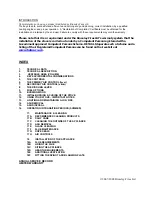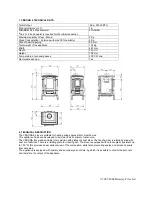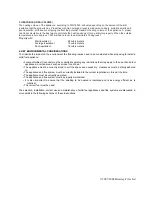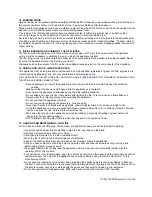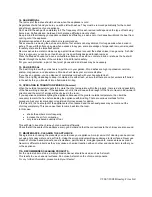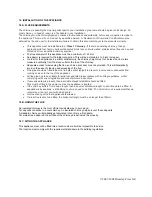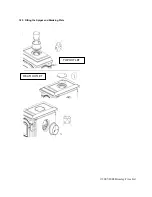
© 2007-2008 Broseley Fires Ltd
18. INSTALLATION OF THE APPLIANCE
18 A. FLUE REQUIREMENTS
The chimney is possibly the most important part to your installation; great care should be given to its design. An
older chimney, in need of repair, is a fire hazard in any installation.
The chimney must be thoroughly swept, checked for soundness and suitability, before any connection is made to
the appliance. This must be carried out by a qualified person. A “Declaration of Completion” certificate must be
obtained by the end user for the installation, failure to obtain this document may void the products warranty.
•
This appliance must be installed into a
‘Class 1 Chimney’.
If there is no existing chimney, then an
approved solid fuel, factory built, prefabricated block type or a twin walled, stainless steel flue can be used.
Get advice from a qualified chimney engineer.
•
The flue diameter of this appliance must be a minimum of 125 mm.
•
An adaptor is required for the initial connection. This will be a standard 4 to 5 inch increaser.
•
In order for the appliance to perform satisfactorily, the chimney height must not be less than 4 meters
measured vertically from the stove outlet to the top of the chimney.
•
Adequate access for sweeping the flue, such as a soot door, must be provided. This will dramatically
improve the ease of cleaning and sweeping of the flue.
•
Flue pipe should be fitted inside the flue pipe collar (spigot) to prevent creosote and condensates from
running down onto the top of the appliance.
•
All flue pipe has to be suitable for solid fuel and fitted in accordance with building regulations, whilst
complying with current legislation and manufacturers’ instructions.
•
If excessive draw is present, then a suitable draught stabilizer should be fitted.
This must be fitted in the same room as the appliance is located.
•
If the chimney suffers from down draught, then a special ‘anti-downdraught’ cowl will need to be fitted. In
exposed windy locations, a ‘stabilizing’ cowl may need to be fitted. The minimum cowl requirement that we
recommend, is a rain cowl with a bird guard.
•
No flue sharing with other appliances is allowed.
•
If a rear flue is able to be fitted, the horizontal length must be no longer than 150mm.
18 B. LINING THE FLUE
An insulated chimney is the most efficient and safe way to burn wood.
Tar deposits condense in a cool chimney. An insulated chimney helps prevent these deposits.
A standard chimney will gradually get saturated in tar, this is a fire hazard.
Tar stains may appear on the surface of the chimney breast inside the property.
18 C. SITING THE APPLIANCE
This appliance must not be fitted into a location where it will be impossible to service.
The location must comply with the requirements laid down in the building regulations.


